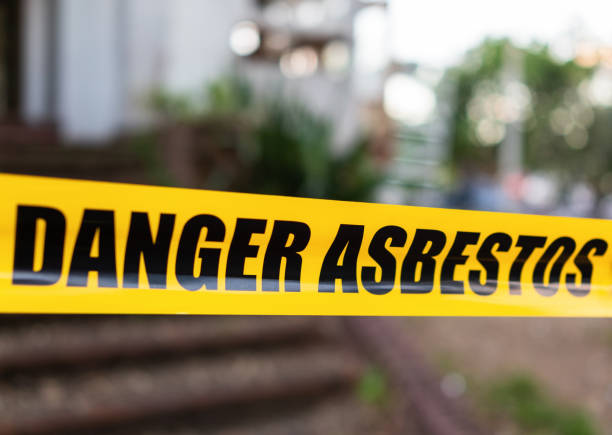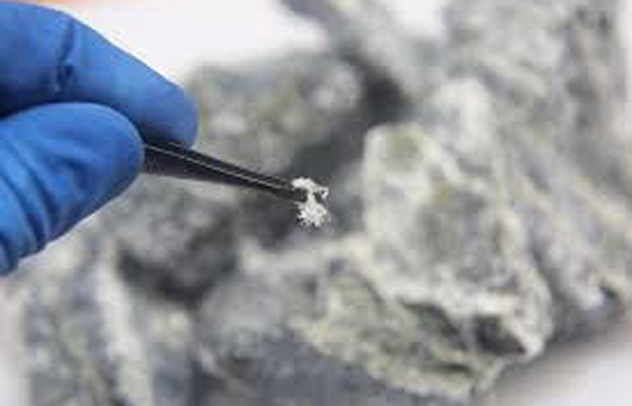What Does Asbestos Look Like? Understanding Its Appearance and How to Identify It
While asbestos was once commonly found in a range of materials across construction, insulation and other industries, it has since been outlawed in Australia due to its severe health risks. That said, many homes and commercial spaces built before the mid 1990s still contain asbestos, posing a potential hazard when it comes to upgrades and renovations. It’s for this reason that the accurate visual identification of asbestos is essential.
Whether you’re planning on resheeting your bathroom or replacing the kitchen tiles, we’re here to help you accurately identify asbestos at home and in the workplace.
What is asbestos?
Asbestos is a term that encompasses a group of naturally occurring mineral fibres. These fibres offer resistance to heat, fire and chemical corrosion, making them a popular compound in building and construction materials, as well as automotive parts, including:
- Cement sheeting (fibro),
- Roofing sheets and shingles,
- Wall cladding,
- Ceiling tiles and panels,
- Vinyl floor tiles,
- Textured paint and ceiling coatings,
- Pipe lagging and duct insulation, and
- Adhesives, mastics and sealants.
The use of asbestos peaked in Australia between the 1940s and 1987. In fact, Australia was one of the highest users of asbestos per capita before asbestos-containing materials (ACMs) were slowly phased out toward the end of the 1980s. However, it wasn’t until December 2003 that a complete ban on using and importing asbestos came into effect.
What makes asbestos dangerous?
Asbestos becomes a hazard when ACMs are damaged or handled incorrectly. Asbestos fibres are invisible to the human eye, and when they become airborne, they can be easily inhaled. These fibres can become lodged in your lungs, damaging the delicate tissue and leading to serious diseases, including lung cancer, mesothelioma and even ovarian cancer.
While living or working around undamaged asbestos isn’t likely to impact your health, more serious issues arise with long-term exposure to high levels of asbestos. Even then, it can take 20 to 40 years for symptoms of asbestos-related diseases to appear.
Understanding the different types of asbestos
There are six different types of asbestos that are grouped into two categories based on their mineral structure: serpentine and amphibole. Chrysotile is the only type of serpentine asbestos, with all other types of asbestos falling into the amphibole category. Each type of asbestos has its own unique properties and visual characteristics.
Here’s a quick overview of the different types of asbestos:
- Chrysotile (white asbestos): Characterised by curly, flexible fibres, chrysotile is usually white or grey and silky in texture. As the most commonly used type of asbestos, chrysotile was often used in construction materials.
- Amosite (brown asbestos): With straight, brittle fibres, amosite is typically brown to grey in colour with a harsh texture. It was typically used in cement sheets, insulation, tiles and pipe insulation.
- Crocidolite (blue asbestos): With thin, straight fibres, crocidolite appears blue with a soft, woolly texture. It was often used in spray-on insulation, pipe insulation, and cement products.
- Tremolite: Brittle, needle-like fibres that appear white, grey, green or translucent in colour. While it wasn’t used commercially, tremolite can be found as a contaminant in talc, vermiculite and chrysotile.
- Anthophyllite: These straight, fibrous crystals can appear dark green to brown or even transparent. Like tremolite, anthophyllite is often found as a contaminant in other minerals.
- Actinolite: This brittle, fibrous structure is typically grey, brown or greenish in colour. Once again, it typically occurs as a contaminant in other asbestos materials.
Where asbestos can be found in the home or workplace
For decades, asbestos was a common material found in a range of building and construction materials. So, if your home, office or workplace was built prior to the 1980s, there’s a good chance you could have ACMs in your space. Asbestos is often found in:
- Roofing,
- Fencing,
- Internal and external wall cladding,
- Insulation,
- Flooring,
- Water pipes, and
- Eaves, but that doesn’t mean you won’t find it elsewhere around your home or workplace.
And just because your home or workplace is made from ACMs, it doesn’t necessarily mean your health is at risk. Asbestos only becomes hazardous when the materials are damaged, meaning asbestos fibres can become airborne if disturbed. If you think you’ve identified asbestos, it’s essential to contact the professionals at Adios Asbestos for safe and reliable asbestos management.
How to visually identify asbestos
As we’ve already touched on, different types of asbestos come in different colours, textures and fibre compositions. That said, the only way to accurately identify asbestos is by testing the materials in a NATA-accredited testing facility. Most asbestos-containing materials can look just like other non-asbestos containing materials, so it can be easy to misidentify potentially hazardous materials.
Not sure whether materials around your home or workplace contain asbestos? It’s always better to be safe than sorry. Treat them as if they do contain asbestos and take the necessary precautions by calling in Adios Asbestos for professional identification.
Risks of asbestos exposure
Long-term asbestos exposure can pose serious health risks, especially when the fibres are airborne, making them easier to ingest or inhale. If these microscopic particles find their way into your body, they can become lodged in your lungs or other tissues, leading to chronic diseases that present decades later.
Asbestos exposure can lead to a range of severe diseases, including lung cancer, mesothelioma, asbestosis and laryngeal cancer. These diseases are often characterised by shortness of breath, a persistent cough and chest tightness. If you think you or someone you know is suffering from asbestos-related illness, be sure to consult a trusted healthcare professional.
When to call a professional
Even low-level exposure to asbestos can be hazardous, so it’s always best to avoid direct contact with any materials you suspect of containing asbestos. Instead of trying to identify the materials yourself, it’s always safer to bring in the professionals at Adios Asbestos to test the materials and provide you with a comprehensive plan for managing asbestos at your home or workplace.
With over 30 years of experience, we pride ourselves on offering clear and transparent advice when it comes to managing asbestos. Get in touch with the team and take advantage of our free advice and free quotes so you can make an informed decision about asbestos management and removal.
 Adios Office
Asbestos
0
Adios Office
Asbestos
0
What Is Asbestos and Why Is It Dangerous?
What Is Asbestos? Types, Risks and Safety Tips
For many years, asbestos was commonly used in a wide variety of construction materials across the building industry.
 Adios Office
Asbestos
0
Adios Office
Asbestos
0
What Does Asbestos Look Like? Signs to Watch For
What Does Asbestos Look Like? Understanding Its Appearance and How to Identify It
While asbestos was once commonly found in a rang
 Adios Office
Asbestos
0
Adios Office
Asbestos
0
5 Facts about ASBESTOS…
Here’s an eye-opening list of facts about ASBESTOS in Australian homes:1 – Asbestos was only fully banned in Australia
 Adios Office
Asbestos
0
Adios Office
Asbestos
0
Illegally Dumped Asbestos found 2 days in a row at Noosa kerbside collection.
https://www.youtube.
 Adios Office
Asbestos
0
Adios Office
Asbestos
0
Tax Deductible Asbestos Removal
This fact sheet provides information for owners of commercial and rental properties on income tax deductions for certain asbestos activities.
